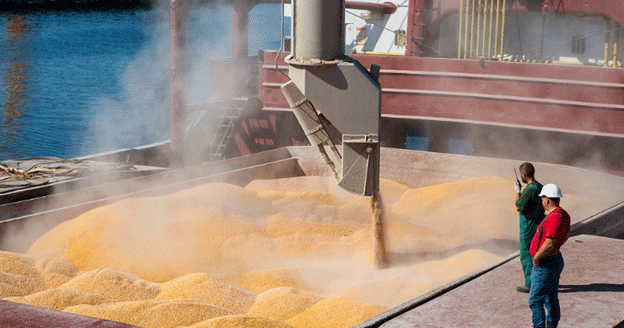For the first time in more than a year, Russia is set to lower export duties on key grain crops starting December 18, according to the Ministry of Agriculture. This change marks a notable shift in the grain export policy, which has largely been characterized by steady increases in duties since their introduction in June 2021. These duties, designed to stabilize domestic prices and ensure profitability for Russian farmers, are now being re-evaluated amidst ongoing debates about their effectiveness.
Key Changes in Export Duties
- Wheat and Meslin (a wheat-rye mix): Tariffs will drop by 15%, from 4,871.5 to 4,136.5 rubles per ton.
- Corn: A reduction of 119.9 rubles, from 4,513.2 to 4,393.3 rubles per ton.
- Barley: A minor decrease of 43.8 rubles, from 2,229.1 to 2,185.3 rubles per ton.
These adjustments follow a year of fluctuating tariff trends. For example, wheat tariffs surged steadily from September 18, starting at 956.9 rubles, and peaked at 1,328.3 rubles in October. Similar trends were observed for corn and barley, albeit with more erratic movements.
Indicative Prices on the Rise
Simultaneously, indicative prices, which determine the export duty rate, are set to increase across all grain types:
- Corn: Up $11 to $229 per ton.
- Barley: Up $10.3 to $197.8 per ton.
- Wheat and Meslin: A modest increase of $3.2 to $236.5 per ton.
These prices are calculated in U.S. dollars due to their direct link to global export contracts. Despite the government’s efforts to reduce reliance on foreign currencies by denominating duties in rubles, no mechanism exists to translate indicative prices into rubles.
Farmer Concerns and Market Dynamics
While the floating export duty mechanism was introduced to protect farmers from market volatility and maintain profitability, many producers argue that it falls short of addressing their financial struggles. Rising production costs, volatile currency exchange rates, and limited access to global markets continue to erode profit margins.
Grain producers have repeatedly called for the abolition of these duties, asserting that they hinder competitiveness on the international stage. The Ministry of Agriculture, however, remains committed to this regulatory tool, viewing it as essential for stabilizing the domestic grain market.
The reduction in export duties is a welcome development for Russian grain producers, offering some financial relief after months of escalating costs. However, the simultaneous rise in indicative prices highlights ongoing challenges in balancing domestic market stability with international competitiveness. To achieve long-term sustainability, the government may need to revisit its approach, potentially refining the export duty system or exploring alternative strategies to support agricultural profitability.
Error




